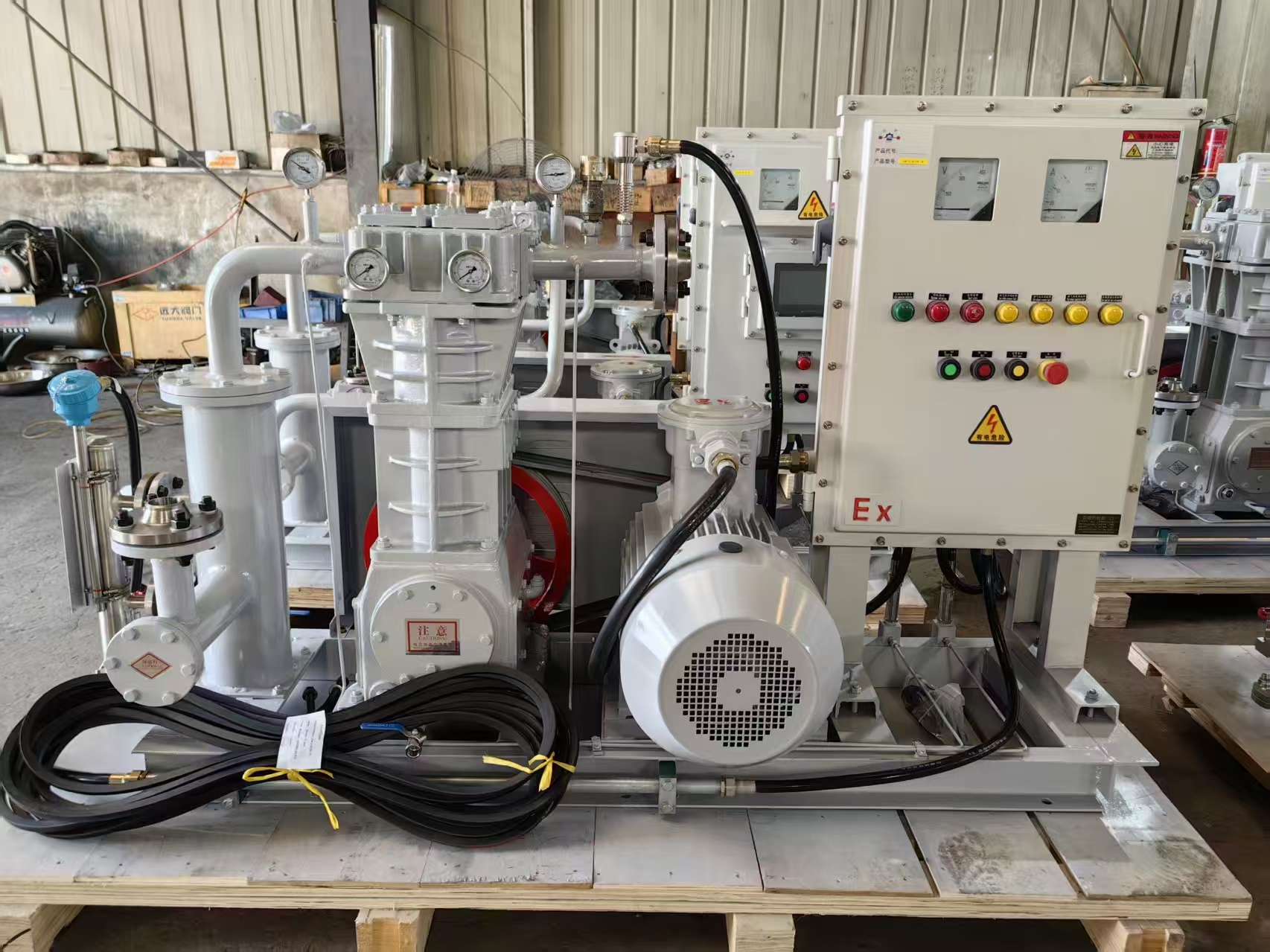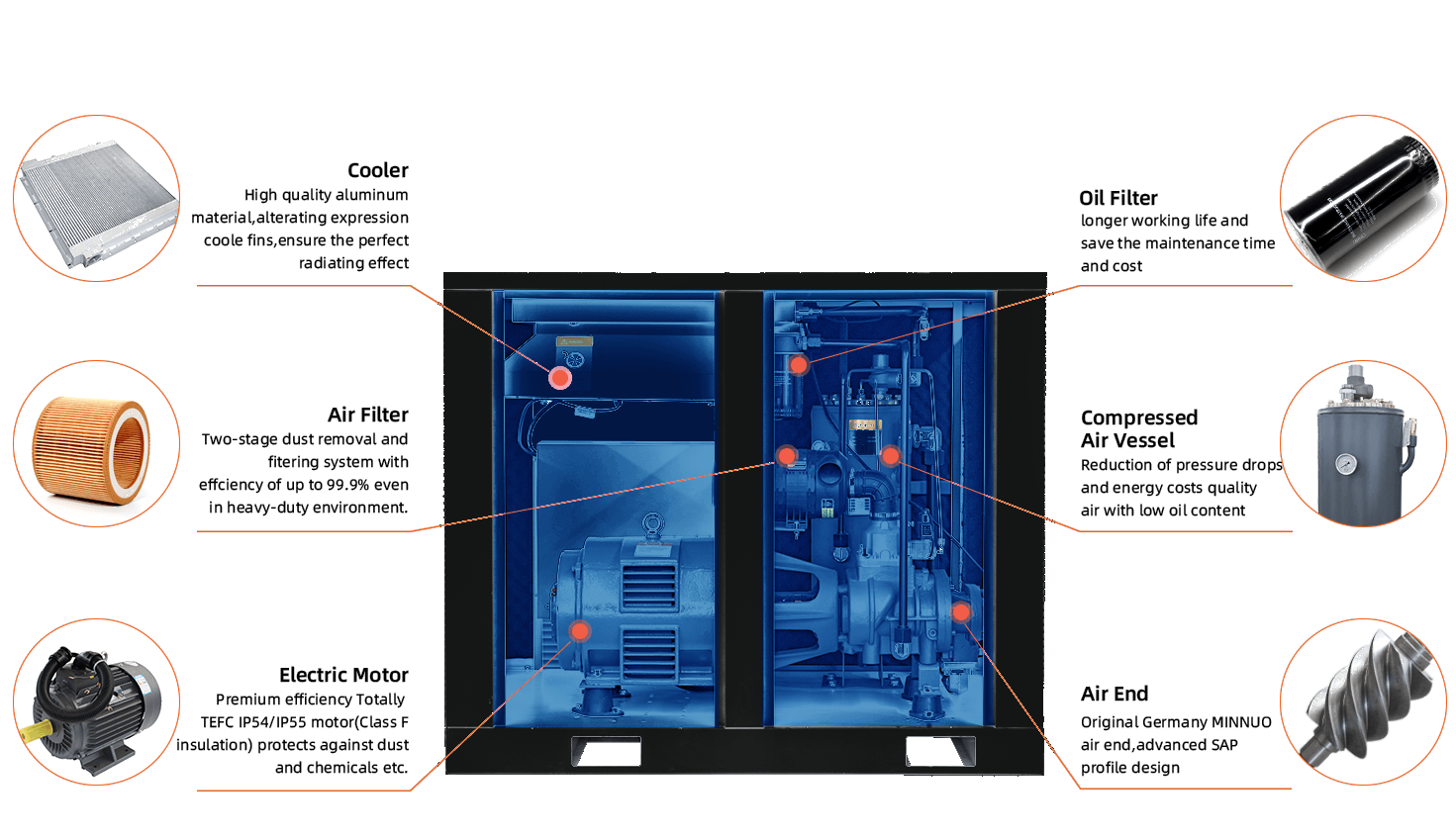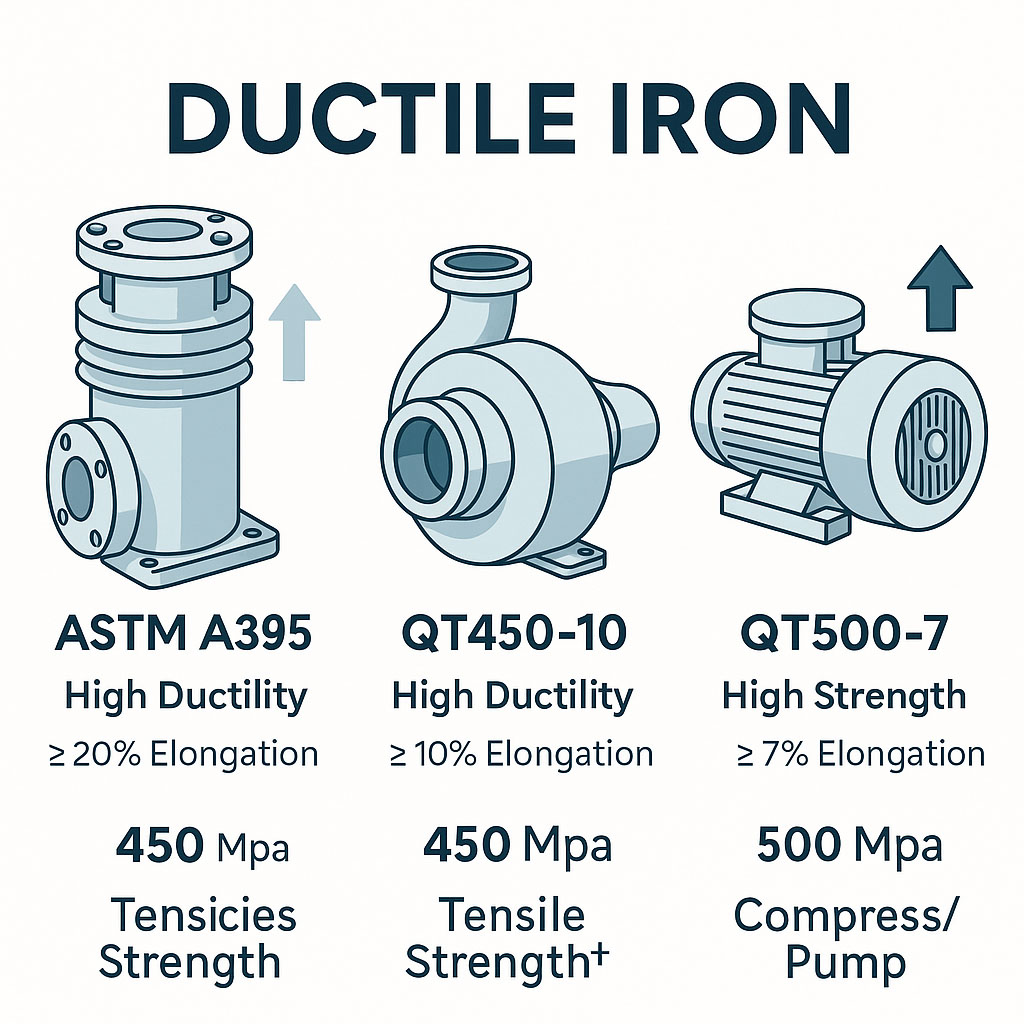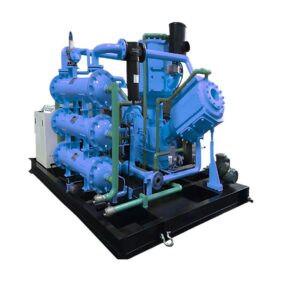When researching air compressors, you’ve likely come across both SCFM and CFM. While they may sound similar, the difference between SCFM and CFM can significantly impact how your compressor performs, especially in industrial settings. In this guide, we’ll break down both terms and explain how they affect compressor efficiency, air compressor capacity, and real-world equipment performance.
💡 What Does CFM Mean?
CFM, or Cubic Feet per Minute, measures the actual volume of air an air compressor delivers at current conditions. It varies with changes in:
-
Temperature
-
Pressure
-
Humidity
For example, a compressor might produce 100 CFM at 6 bar in 25°C ambient conditions. However, this figure is only relevant at that specific environment.
📐 What Is SCFM and Why Is It Standardized?
SCFM stands for Standard Cubic Feet per Minute. Unlike CFM, it measures airflow under fixed, standard conditions:
-
Pressure: 14.7 psi
-
Temperature: 68°F (20°C)
-
Humidity: 36% relative humidity
Because it’s normalized, SCFM allows for accurate comparison across different types of air compressors, regardless of location or application.
✅ For example, a KEEPWIN scfm air compressor with 15 SCFM at 8 bar ensures the same airflow output whether you’re in Turkey, India, or the U.S.
⚙️ Why Does the SCFM vs CFM Difference Matter?
When sizing a system, air compressor capacity must match the air demand of your tools or process line. If you rely only on CFM, you might overestimate or underestimate what your compressor can deliver.
➤ Key Implications:
-
Undersized compressors lead to pressure drops and downtime
-
Oversized units waste energy and increase operational cost
-
SCFM ensures accurate equipment matching and improved compressor efficiency
🔍 Real-World Example from Keepwin
In a recent project, a Middle Eastern pharmaceutical client needed an oil-free nitrogen booster for precision instruments. Their team initially calculated airflow in CFM, which led to selecting a smaller model.
After consulting Keepwin, we recalculated using SCFM, revealing a 12% flow gap. The revised selection was our GV-15/220 diaphragm compressor, which delivers 6 Nm³/h (~3.5 SCFM) at 220 bar. This adjustment ensured stable pressure and avoided product batch rejection.
✅ Summary Comparison: SCFM vs CFM
| Aspect | CFM | SCFM |
|---|---|---|
| Depends on Environment | Yes (pressure, temp, humidity) | No (standardized conditions) |
| Used for Sizing Tools | Not reliable without context | Yes – ideal for precise calculations |
| Common in Marketing | Often listed in catalog specs | Preferred in engineering design |
| KEEPWIN Uses | Both (clearly labeled on all models) | Both (for accuracy and global use) |
🧠 Final Thoughts
Understanding the difference between SCFM and CFM is essential when choosing or comparing types of air compressors. While CFM tells you what your compressor is doing right now, SCFM tells you what it can do under standard conditions. Both are useful—but only when properly applied.
So, whether you’re buying a scfm air compressor or assessing compressor efficiency, make sure to use SCFM for planning and CFM for real-time monitoring.
📩 Need help choosing the right air compressor?
👉 Contact Keepwin Technology Hebei Co., Ltd. at keepwin@keep-win.com
🌐 Visit www.keep-win.com to learn more.











